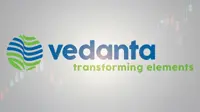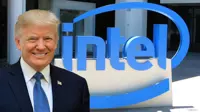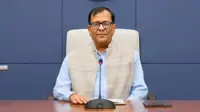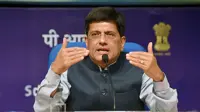Survival of the fittest
By Venkatachari Jagannathan | 07 Feb 2001
The reason is simple. The business portfolios of both these companies comprise major industrial groups who would be the target for private insurers. Further major financial institutions like ICICI, IDBI and State Bank of India are venturing into the sector. One need not mention the obvious clout these institutions would have over their borrowers to insure with their own insurance outfits.
The ominous signs are already coming. United India, contrary to its target of 15 per cent growth, clocked just 5.73 per cent growth last fiscal, with gross premium income growing to Rs. 2,390 crore as compared to Rs.2,221 crore in the previous year.
Mr. K. N. Bhandari, chairman and managing director, United India Insurance, said, "Last year no major engineering or power project came up to shore up our premium earnings. While the transit insurance business remained stagnant, the 30 per cent reduction in fire premium rates affected the company."
The fire premium reduction has come as a major blow to the insurers. According to him, United India has lost around Rs.100 crore in premium income due to the reduction. The reduction has a cascading effect on the company's finances as it impacts the investment funds available and consequently the investment income.
"In one way the fire premium reduction is a blessing in disguise as the new entrants will have to focus on other market segments too to survive," Mr. Bhandari agrues.
The general rate reduction apart the recent trend that affects the insurers income is the clamour of many industrial groups for merit based rating. Under this scheme companies with assets valued more than Rs. 1,050 crore can avail the facility of 'stand alone premium rating' based on their risk exposure and risk management techniques. The premium under this facility is very low compared to the normal fire premium rates.
For instance, Reliance Industries has reportedly paid just Rs. 48.50 crore as premium for its fire insurance under a mega policy as against Rs. 140 crore paid earlier.
However Mr. R. Ramalingam, general manager and director, United India, remarks that premium income on net basis – primary plus re-insurance premium - will not be affected when competition comes in. "The new entrants will have to re-insure their risks with us", he adds.
Brave words indeed! But the company is now facing the challenges of retaining its profitable clients, roping in newer ones and staying in black. With premium growth unlikely to happen as in the past, the other avenue to remain in black is to focus on profitability. That means concentrating on profitable business and reducing costs.
All these years rewards for operational executives were based on premium growth, thus losing sight of small but profitable clients - corporates as well as individuals. As a result, clients with sizeable premium account were given special treatment despite their adverse claims ratio.
The other focal point is reducing costs. This assumes significance as the company's cost ratio at 29.40 per cent stands much higher than the statutory limit of 19.5 per cent. While reduction of intermediary cost is being addressed on an industry-wide basis, reducing the survey fee outgo is the other area where United India is trying by encouraging in house survey of claims.
Losses less than Rs. 20,000 per claim forms part of smaller claims reported. In order to combat the rising trend and to break the surveyor-repairer-insured unholy nexus, United India is encouraging its employees to do claims survey. The company has also asked the central government to amend the Insurance Act to enable insurers to obviate the need of engaging licensed surveyor for claims upto Rs 1 lakh. "The provision that losses above Rs. 20,000 has to be surveyed by a licensed surveyor was fixed decades back and the Act has to keep pace with the times", argues an official.
On the loss minimisation front, the company is bestowing special care on motor insurance portfolio where the overall incurred claims ratio has spurted to 133 per cent last fiscal from 117 per cent in 1998-1999.
The stagnant premium rates vis-a-vis the galloping claims is cited as the reason for mounting losses under motor insurance portfolio. One of the reasons for increased motor claims pay out is the 100 per cent settlement of claims without deducting any sums towards depreciation in the case of private cars and two wheelers. The net result is the increase in 'own damage' claims ratio by 10 per cent to 62 per cent.
"Our customer friendly move has resulted in motor garages making un-deserved money. The garages coolly replaces a part instead of repairing it," bemoans Mr. Bhandari. The company is considering reintroduction of depreciation clause in respect of cars and two wheelers. In addition the company is grading auto garages so that the latter do not inflate the service bills.
While the underwriting loss (premium less claims paid) went up to Rs. 276.63 crore last fiscal from Rs. 128.03 crore posted during 1998-1999, it is the investment income of Rs. 439.55 crore that helped the company to stay in black. Here again United India has to contend with the reducing mean yields. Last year the mean yield was 11.78 per cent as against 12.26 per cent registered during 1998-1999.
The company's total investments stood at Rs. 4,151 crore as increase of 16.16 per cent over 1998-1999 levels. Surprisingly the net non- performing assets (NPA) increased to Rs. 126.73 crore from Rs. 32.39 crore in the previous year. This is attributed to many companies in steel and textile sector doing badly.
According to Mr. Bhandari, the tough period will last for couple of years. "After that there will be a consolidation in the industry and we will again hit the growth path. Till such time the path to profitability is through cutting costs," he remarks.
The first industry wide issue that will be taken up by Gipsa will be the issue of development officers, their cost to the company and their future role. "The incentive schemes for development officers were devised some years ago based on some premise. Those conditions have changed now necessitating a new look," he remarks. Talks have been initiated with the concerned associations.
In addition internal/organisational reforms focussing on cost reduction is also being planned. "No. VRS is not in my mind. In fact VRS is not a panacea for all the ills," he pre-empts.
According to him United India has to bring down its cost of operations at least by five per cent in three years time in order to absorb the higher intermediary cost. The concept of corporate agents/brokers is now being introduced would increase the intermediation costs of four insurers by several folds. The only way out is to concentrate on profitability by following the profit centre approach.
While agents will be paid a commission of 15 per cent, the brokers will get paid 17 per cent of the premium procured by them. "The average cost of intermediation will go up by 12.5 per cent," he says sounding worried. Applied on United India's last years' gross domestic premium income of Rs. 2,348 crore, the intermediation cost comes to around Rs.293 crore. The actual commission paid for procuring business is just Rs. 85 crore.
It is also learnt that the company will be talking to other prospective players and the futility of paying high commissions on some class of business, say fire insurance business.
Another idea mooted by Mr. Bhandari is the spinning off of United India's Rs.400 crore oil/energy insurance business into a separate outfit. The company has selected a consortium of Mahindra Acres, Tata AIG, Capital Fortunes to advise on it on this proposal.
The total domestic oil/energy sector insurance premium is around Rs 900 crore. Further this is one area where substantial outgo in form of reinsurance premium is there.
Speaking about the proposal Mr. Bhandari says, "We are trying to find out how the new entity would be structured. Whether it will be a joint venture of four general insurers or whether there will be an overseas partner or whether oil and energy companies would put in their money etc are some of the ideas. But we have to wait for the consultants report."
When queried about the viability of such a venture when the minimum start up capital required is Rs.100 crore while the company's premium from this segment is Rs. 400 crore officials outline the possibility of this outfit becoming the major oil/energy insurer in the south east Asian region.






















